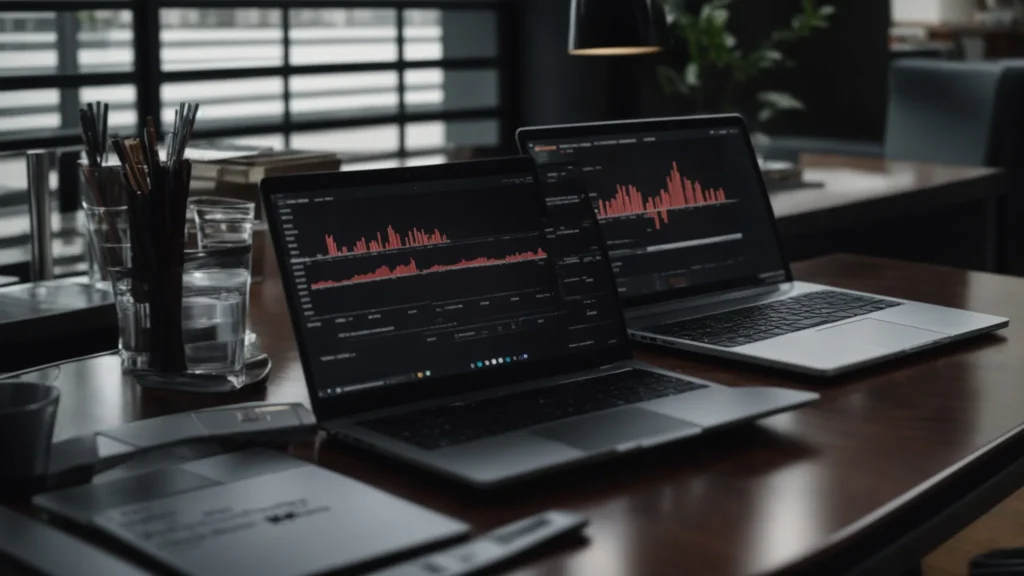Looking for great stock picks can feel like the search for a needle in a haystack. The data can suggest so many different potential outcomes and it can be hard to evaluate the true value or potential of a company. To make matters worse, news pundits that discuss stock market trends often give off the impression that they have some kind of silver bullet for finding great stocks on the move. New investors especially may easily feel like they are being left in the dust. But there are some simple metrics that can help you identify great buys and possible flops that you should pass on. Whether you are considering a buy-in of the best bottled water in Canada or purchasing shares of a new tech startup that shows promise in its niche, the measure of success remains the same.
1. Times earned interest as an indicator of cash flow health.

Novice investors often ask ‘what’s a good times earned interest ratio?’ The answer might seem a little complicated but it’s actually easy to follow. Times interest earned is a measure of a company’s ability to pay back its debts in the event that earnings drop to zero. Essentially it’s a measure of cash on hand or a quasi-savings account. A TIE ratio of around 5 is traditionally seen as a secure company, keep in mind however that this TIE metric is a measurement of a hypothetical need to pay back the lump sum of a company’s debts all at once and in the event of a sudden elimination of business. Neither of these things is likely to happen to publicly traded companies, so this value acts as a hypothetical indicator of corporate stability—although it does this job admirably.
2. Increasing dividend payouts show a trajectory of success.
Increasing dividend payments often indicates one thing: A company that is seeing growing success in its industry or beyond. In fact, there is an industry term for companies that commit to this increase. A dividend aristocrat is a stock that has increased its base dividend payout each year for a period of 25 consecutive years. It’s a tall order, but many of the most stable companies on the market do just that. Firms that follow suit often show stability in the same realm as these stalwarts of the industry and represent potentially lucrative and safe buy-ins.
3. Keep a close eye on the price/earnings ratio.
The price/earnings ratio acts as a measurement of any given stock’s overbought or oversold status. More fundamentally, the P/E ratio gives investors a sense of the purchasing power possesses per dollar of the company’s earnings. The market typically trades at a P/E ratio of about 15, but market segments show averages that range higher or lower than this aggregate total. Finding the average can give you some insight into whether a stock is overpriced in relation to its competitors. Knowing this relative value can help you determine whether you think the firm is doing something that warrants that higher relative price tag or whether this indicates a corrective reversal in pricing. Interrogating the underlying value of any company can help you determine when it’s a good idea to buy or when to skip out on purchasing shares altogether.
4. Read the newspaper to correlate real-world events with market movement.
Finally, correlating real-world data is an essential step in finding great companies that show a huge potential upside. It’s not enough to think of business and the stock market in a vacuum. You must be able to interpolate real-world events in order to understand how any given company will fare as the realities of the marketplace shift in the churn of world events. The coronavirus is a great example of how seemingly unrelated events impact interest rates and stock value on a global scale.
Early on, the entire travel industry saw incredibly depressed prices that made a brief rebound as soon as the stimulus checks began hitting bank accounts. They weren’t the only ones, though. Everyone from the manufacturing sector to the bottled water industry saw the way they do business change. This was true for small businesses around the U.S., but also for huge corporations like Nestle or Aquafina. On all the continents—from New York City to the French Alps—financial statements changed for an unprecedented time period due to the global pandemic. These current events steered market pricing in real-time and led to many investors making a quick buck, and many others locking in major losses.
Reading the market and selecting great companies to throw your capital behind requires a measured approach that takes the data available into consideration and filters it through real-world changes. Stock picking is done best when you apply your own logic to the science of business data.











